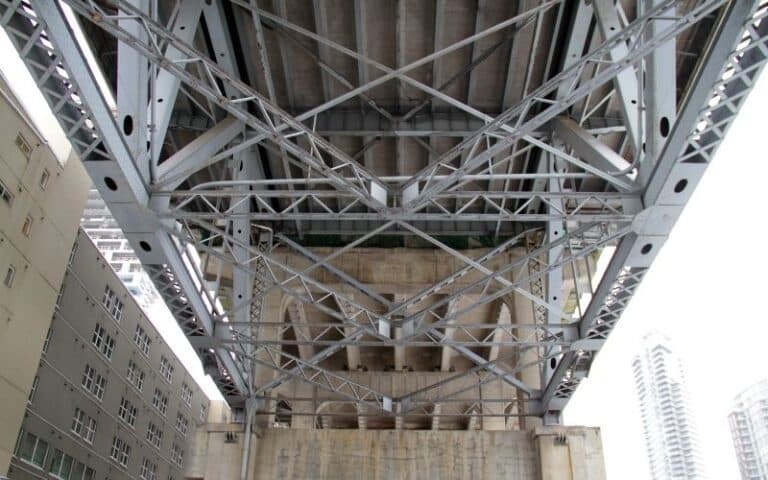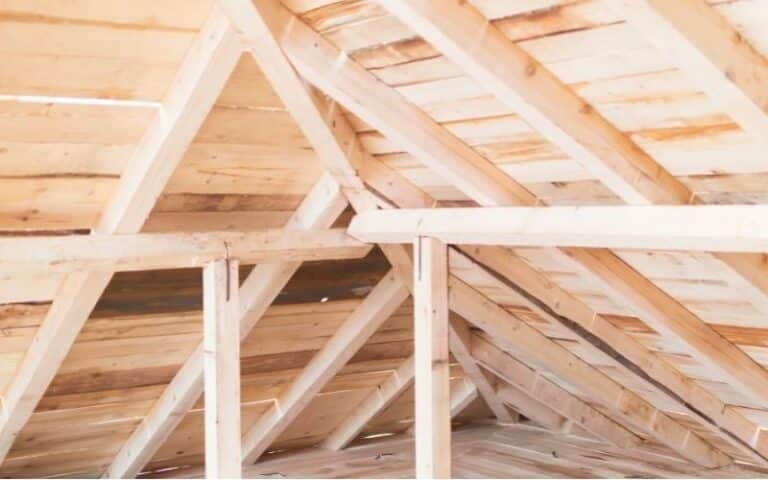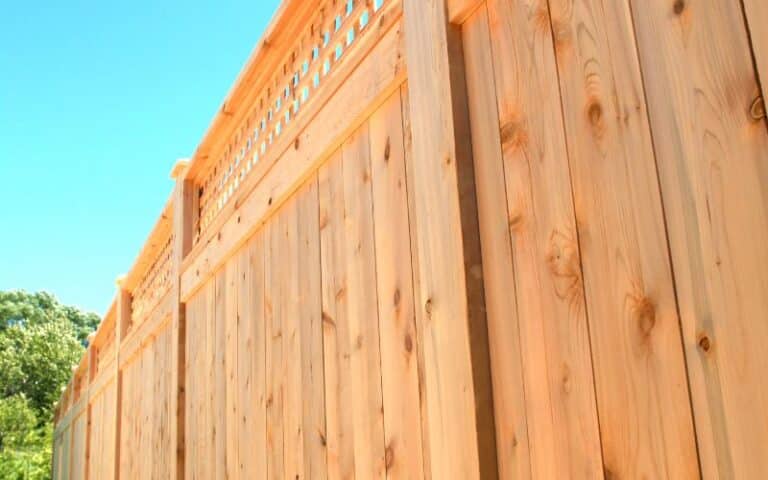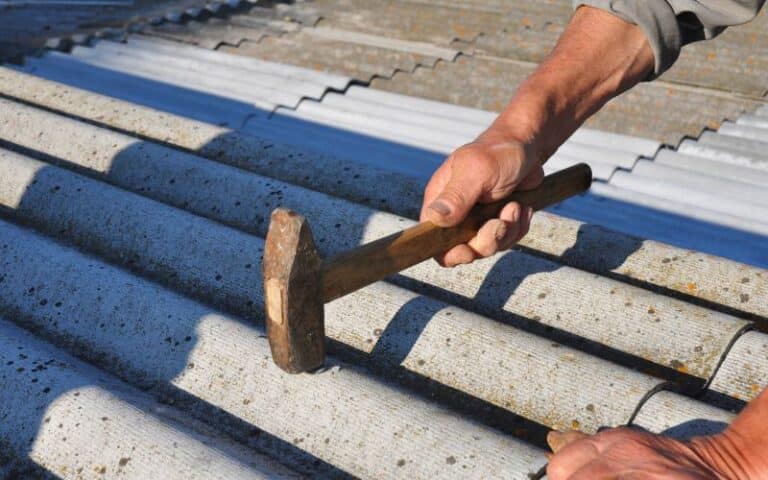Regarding housing, roof problems can be risky chores for homeowners.
However, reflective roof coatings have given rise to a liquid rubber waterproof sealant that withstands ponding water, provides high reflectivity, and protects against harm from solar ultraviolet radiation.
Roofing tar is a waterproof sealant multipurpose compound that serves as one of the best roof sealants and protects against water, ultraviolet rays, sunshine, and freezing temperatures. It is also very durable; with good maintenance, tar and gravel roof can last on a roof for up to 25 years, although it may require money.
Ready for a Roofing Quiz?
Is Roofing Tar Waterproof?
Like roofing, wet roofing tar acts more as a shield than a sponge. When constructing a flat-roofed house, many home builders use roof tar.
This type of material is highly resistant to the sun’s UV rays. It’s also great for protecting your roof from the water and snow that always settles on a flat roof.
Tar, on the other hand, is a poisonous substance. It can emit toxic and strong smells throughout the application and curing phase.
Generally, contractors recommend that homeowners evacuate for a few days while their new roof is installed. Yes, it has a bad smell.
Roofing Tar Formulation
Roofing tar is a black oily substance that consists of Primary material formulations such as acrylics, asphalt, butyl, coal tar pitch, polyurea, and polyurethanes.
It also consists of polyvinylidene fluoride, silicones, and styrene-butadiene. It’s a heavy-duty paper commonly utilized during construction as a waterproof sealant and multi-purpose layer.
Tar paper is manufactured by fiberglass mat or impregnating paper with tar, resulting in a waterproof roofing material.
Coal tar and petroleum byproducts are used to make roofing tar. Coal tar is a dark brown or black residue produced during coal mining.
Coal tar must be refined and treated per roofing standards. Although newer roofing tar formulations may not contain asbestos, they may contain solvents, surface adherents, polymers, and mineral fillers/fibers.
Although most roofing tar formulations are black, some manufacturers have created lighter varieties such as silver and white.
Tar is temperature sensitive; temperatures below 70F cause the chemical to take a long to set. Roofing tar, however, will convert into a liquid at extremely high temperatures because of its liquid/solid properties.
As a result, it is not advised to use it on high slopes. On the other hand, roofing tar’s peculiar liquid/solid qualities make it excellent for flat and low-slope roofs, where it can self-heal and repair leaks.
Related: Will Roofing Tar Help Floor Pan Rust?
Is Roofing Tar Paper Waterproof?
Roofing tar paper is a common roofing underlayment and waterproofing agent. It is one of the best roof sealants that provides excellent waterproof protection for your roof deck.
Tar paper is a heavy-duty paper commonly utilized during construction.
It is made using impenetrable paper or fiberglass mat and tar to create a waterproof material for the construction of roofs. For ages, tar paper has been utilized.
Roofing tar paper is water repellent; therefore, it can be used as a shield rather than a sponge.
Roofing felt can become wet and still be effective if it isn’t exposed to the elements for over a few days. However, it may rip if the felt is still wet when the shingles are placed.
Can You Apply Roofing Tar in Rain?
You can apply roofing tar in the rain, but that is If you are using a liquid rubber waterproof tar that you can apply in the rain. If at all possible, avoid applying the tar when it is raining.
Because most roofing tar is an oily, black mixture of petroleum byproducts and coal tar, it is naturally slick.
So if it’s raining and you’re not using liquid rubber waterproof tar, there is a good chance the tar won’t stick to the surface.
Before you tar the roof, try to get a few days of sunshine without snow or rain. This will give the tar time to cure.
The best temperature for applying roofing tar is roughly 70 degrees Fahrenheit, while it can be done at lower temperatures.
The roofing tar may begin to drip in hotter temperatures, creating a nightmare of a mess to clean up.
Below are some pros and cons of roofing tar:
- Roofing tar is an excellent choice for a flat roof. This is because roofing tar is very resistant to the sun’s UV radiation, which can be harmful over time.
Roofing tar is particularly useful for safeguarding your roof throughout the winter when snow and water can accumulate on rooftops. - This ability of roofing tar to be waterproof is beneficial. Still, roofs that aren’t well-protected against water and snow might suffer from surface damage and leaks that can penetrate the structure.
When leaks are not addressed, they can lead to mold, rot, and damage to the structure’s wooden components. This could result in a hazardous system, in which case no one should be inside until repairs are made. - The disadvantage of tar is that it is a non-renewable resource. In addition, it emits unpleasant fumes while being applied and cured, which can be highly harmful to one’s health if the necessary safety precautions are not taken.
- It is strongly advised that you do not attempt to tar your roof yourself unless you have prior experience. Roofing contractors will be equipped with breathing masks to keep them safe during the installation procedure.
This is why contractors will tar the building more often than not while the residents are away.
If you must apply roofing tar by yourself, listed below are a few things to keep in mind to ensure that the job is done correctly and safely.
- Before attempting to apply roofing tar by yourself on your roof, ensure the roof’s surface is free of structural damage. You can start once you’ve confirmed no visible issue spots.
- Keep in mind that using roofing tar to fix cracks is not a long-term solution in case of any cracks. If you notice any places damaged in this way, contact a roofer or contractor immediately so that they may take the required steps to provide a more permanent repair.
- It’s good to leave the tar in direct sunshine for an hour or so to thin it down and make it simpler to apply.
- The next step is to make sure the roof is clean and debris-free. Starting the procedure and tarring over debris is the last thing you want to do. This is ugly, but it also puts your roofing tar in danger of failing to seal correctly.
- When starting the operation, start on the opposite side of the roof and apply the roofing tar in smooth, short strokes. Continue in this manner until you reach the side of the building from which you entered.
Related: Will Roofing Tar Keep Insects Away?
Will Tar Paper Protect A Roof From Rain?
Like waterproof asphalt filler, Tar paper can protect your roof from rain due to its water-resistant nature.
Tar paper can protect your roof from rain and protect it against sunlight, snow, and other unfavorable weather conditions.
In the case of snow, Snow dams, like in the northern states, are a common cause of water damage.
When the snow melts because of the heat in your home, the water on the roof leaks into the nooks and crannies, which causes damage to your walls, insulation, and ceilings.
The most uncomplicated technique to prevent an ice dam is to use a water or ice protection membrane. However, roofing tar is far more effective and acts as an extra layer to prevent leaks.
Conclusion
Roofing tar serves as a liquid rubber waterproof layer. Nonetheless, there are other rubber waterproof sealants like the waterproof asphalt filler.
Also, there are other roofs flashing sealant layers like the stick seam tape; but roofing tar is better a good substitute for them all due to its durability and the fact that its function covers the function of the others.






